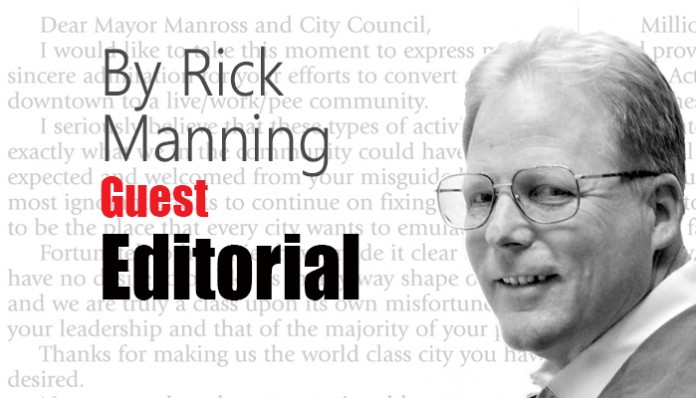Government does not create jobs, the private sector creates jobs. This is the basic rule that gets obscured in the political back and forth over the economy. And truthfully, it is very tempting to forget when you work for the government focused upon trying to increase opportunities for Americans in a changing workforce.
What government policies can do is create or undermine the conditions upon which the private sector operates in the hopes that the overall net of the millions of decisions made each month on whether to increase or reduce the payroll will be a net plus, but apart from directly hiring new employees, government has very little immediate direct impact on the unemployment numbers.
This is why President Obama’s shovel ready jobs stimulus package was such an abysmal failure. The presumption that if you pump almost a trillion dollars into the economy you are going to jump start the work force simply did not work because government, particularly the federal government, is anguishingly slow in action. From the identification of target sectors and the grant application preparation to the evaluation of thousands of requests to the awarding of the money by the government takes months, if not years, and by the time the money is spent, the market has shifted as has the need.
During the early to mid-2000s in the George W. Bush administration, the financial services sector was hot, and after consulting with local community leaders, the decision was made to provide training through community colleges for these burgeoning financial services jobs, grants were let, money was spent and people were trained.
Unfortunately, unanticipated market events were occurring that would change everything, eventually leading to the popping of the financial bubble and the collapse of the housing market. A flood of people who were working in the very financial services industry that was so robust a year before were now unemployed and local and state grant requests flowed into the Department of Labor seeking to retrain them for other jobs.
While the hubris created by being in government can be alluring, it is important for policy makers to recognize that markets move rapidly. The millions of decisions each month that make up the jobs reports are not centrally planned, but in most parts are the results of conversations with small business owners’ spouses on whether to expand, contract or stay the course. Decisions on whether to buy new equipment to increase productivity on the shop floor, which creates jobs for those who sell, manufacture and deliver the new machinery or make do with the old. And indeed the decision on whether to start a new venture or close down an existing one are all private decisions driven by the market.
So what does the federal government do?
It creates tax, regulatory, immigration and trade policies which inform the dining room table and indeed corporate board room decisions which drive job growth. The government also can create a sense of ease or unease which shows up in consumer confidence rankings which are part of the underlying assumptions for the expand or contract private employment decision. If the employer feels that the situation moving forward is bright, they show it by expanding to meet that future. If their guts tell them that rough waters are ahead, they trim their sails, don’t replace a worker who has left and try to get their underlying debt reduced. Both decisions are rational, and both are happening simultaneously for different employers every day as they evaluate their circumstances.
And every month the U.S. Department of Labor releases an unemployment report which attempts to provide policymakers a monthly snap shot of the results of these decisions.
Today, the unemployment rate is 3.8 percent.
We know that 2.2 million more people amongst the critical working group ages 16-64 years old are participating in the labor force today — that is, working or looking for work — than would have been if the participation levels had remained the same as before President Trump took office.
We know that 4.8 million jobs have been created since President Trump took office with 466,000 of these newly created jobs in the manufacturing sector. And we know that the wages employers are paying have gone up overall by 6.4 percent with blue collar workers getting larger increases than white collar workers since President Trump took office.
We also know that the Trump administration’s policies designed to end punishing business taxes and provide overall lower taxes for individuals, along with ending economic growth stifling regulatory burdens as well as reworking trade agreements around the world are having the effect of tipping the scales in those individual decisions toward growth, as well as emboldening the lending of capital to allow this growth to happen.
And finally, we know that the result is that the unemployment rate for blacks, Hispanics and disabled persons have hit historic lows during the Trump presidency.
Government doesn’t create jobs, but government policies can determine if the private sector will create them. After two years of the Trump administration, it is clear that his policies have unleashed a pent up economic growth tide that crosses all ethnic and self-identified hyphenated boundaries.
While these economic tides roll in and roll out, over time, they end up leaving the nation’s citizens wealthier than before, and that is not a monthly snap shot report, it is a 200 year historical fact.
The author served on the Trump transition team for the Labor Department and is the President of Americans for Limited Government.





